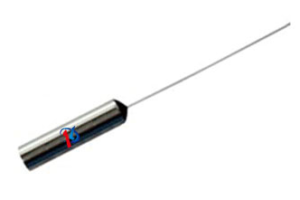The use of high-power Faraday rotator and isolator is common in high-power fiber lasers and amplifiers and various other advanced devices. The main function of these devices is to protect components or the entire system against back-reflected light and also the amplified spontaneous emission from having negative effects. In this blog, we will explore what Faraday rotators and isolators are.

What are Faraday Rotator and Isolator?
A Faraday isolator is technically an optical isolator that helps transmit light in a particular direction while blocking light in the reverse direction. Its design is based on Faraday rotators and is considered one of the most important types of optical isolators.
There is also another variant of the Faraday isolator that is called an optical circulator and has a minimum of three optical ports.
Typically, you will find two types of Faraday isolators:
- Polarization-sensitive Faraday isolators
- Polarization-insensitive Faraday isolators
Polarization-Sensitive Faraday Isolators
These are the simplest types of isolators because they work only when the input light has a prescribed direction of linear polarization. A properly polarized and collimated input light first passes across a polarizer with the least loss, then a 45-degree Faraday rotator, and finally passes through another polarizer.
When input light passes through the Faraday rotator, the transmitting axis of input light is rotated by 45-degree. The main reason to introduce the Faraday rotator in the system is that it helps reduce transmission losses significantly.
In this case, the rotation angle of the Faraday rotator deviates from 45-degree to some extent either due to fabrication defects or due to any other reason, the orientation of the output polarizer might still be adjusted for maximum transmission. However, in that case, the degree of isolation decreases. Thus, the main focus should be on getting a Faraday isolator and rotator that has very high isolation.
Polarization-Insensitive Faraday Isolators
These devices are designed to work for arbitrary polarization of the input beam. Such devices are normally used in the fiber optics industry because not all fibers are polarization-maintaining. Optical fiber communication systems, in general, operate with an undefined polarization state. For these systems, you need Faraday isolators and other components that can work with random polarization states.
The working principle of a polarization-insensitive isolator is to first separate the orthogonal polarization components of the input light spatially by using a polarizer, and then send both through a Faraday rotator and combine them with the second polarizer.
Since there is an unpredictable relative phase change between the two polarization parts, a polarization-insensitive isolator doesn’t preserve the polarization state of the input beam.
For most applications, a low insertion loss is highly desired, which is determined by a variety of factors. The amount of insertion loss is influenced by the type and quality of polarizers used, residual reflection losses, and the accuracy and uniformity with which the desired rotation angle is achieved in the rotator.
Thus, when looking for a high-power Faraday rotator and isolator, one must always look for the ones that have high isolation and low insertion losses.

Leave A Comment